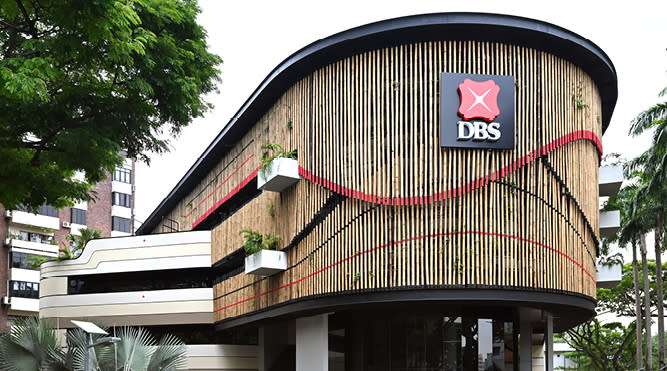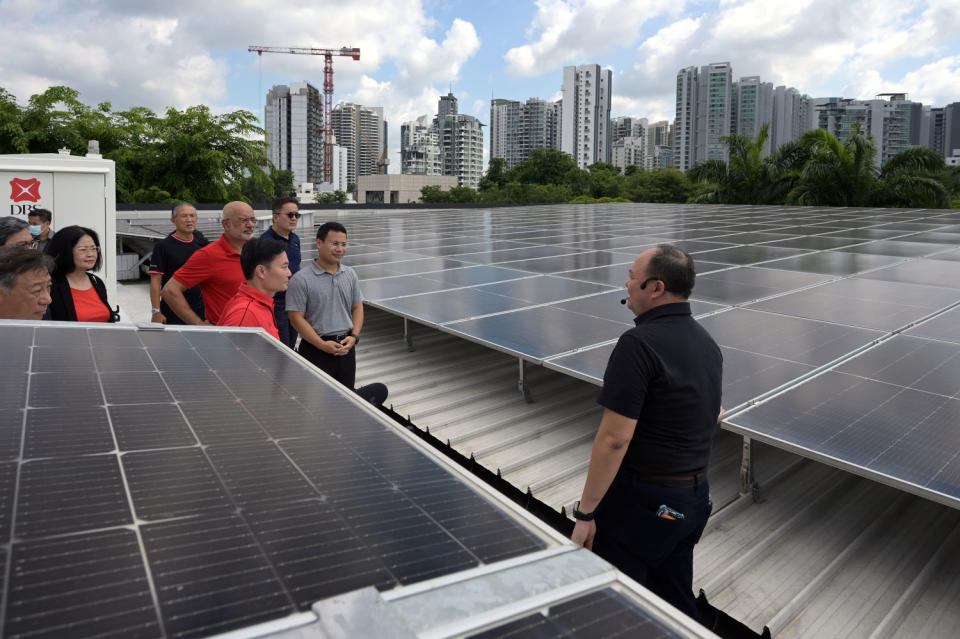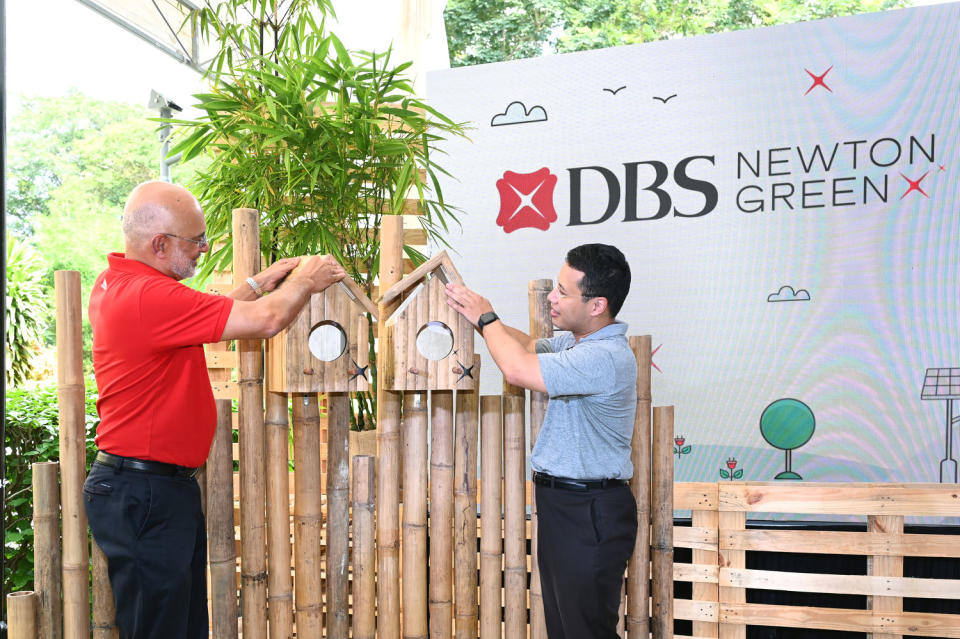Refurbished DBS Newton Green is Singapore's first net-zero building by a bank

The retrofitting works are projected to cut the building's energy consumption by at least 70%.
DBS has opened Singapore’s first net-zero building by a bank, as part of the bank’s goal of achieving net-zero operational carbon by the end of the year.
Located at 135 Bukit Timah Road, the refurbished DBS Newton Green houses over 400 employees from various functions across the bank’s consumer banking group.
Before retrofitting works began, the 30-year-old building consumed about 845 MWh each year, equivalent to the annual energy consumption of about 200 four-room HDB homes in Singapore.
DBS Newton Green is projected to save at least 580 MWh of energy per year, or 70% of the building's energy consumption before the retrofitting works.
According to DBS, it invested over $5 million into retrofitting works, which started in mid-2021. A portion of the cost was covered by a grant awarded by Singapore’s Building and Construction Authority (BCA) under the national Green Buildings Innovation Cluster (GBIC) Programme. The building is expected to recover the retrofitting costs within four years.
Retrofitting is much more sustainable than building a new development from scratch. According to the World Green Building Council, embodied carbon accounts for 11% of global carbon emissions, and is estimated to constitute up to 40% of Singapore’s carbon emissions due to shorter building lifespans as a result of urban renewal.
To minimise energy use, 10% of the floor area that was previously air-conditioned has been converted to naturally ventilated spaces that do not need air-conditioning, says DBS.
DBS Newton Green is topped with over 1,000 sq m of rooftop solar panels to maximise renewable energy production. The bi-facial panels also capture sunlight reflected off the roof surface onto the underside of the structures.

A slatted bamboo facade shades the building while allowing natural ventilation. As a natural material, bamboo has lower embodied carbon than steel or concrete, says DBS. Sourced from Indonesia, the bamboo can last a decade, says Erwin Chong, group head of corporate real estate, DBS.
A new overhang design houses in its cavities the building’s compressor units, freeing up space for solar panels on the roof structure.
More than half of the building’s perimeter facade is covered with living plants. DBS says this both lowers the internal building temperature and provides refuge for native butterfly and bird species. The bank selected the plants in collaboration with the Nature Society of Singapore to provide suitable refuge for native butterfly and bird species such as the magpie robin, bulbul and flowerpecker.
DBS also partnered Magorium, a social enterprise supported by the DBS Foundation, to use a sustainable material called NEWBitumen to pave the driveways in the compound. NEWBitumen is made from recycled plastic waste and reprocessed asphalt waste and is an effective replacement to the bitumen derived from crude oil that is traditionally used to pave roads.
Minister for National Development Desmond Lee opened DBS Newton Green on July 18. He says Singapore needs to retrofit “many more” older buildings to improve their sustainability standards, but this is more challenging than designing a green building from scratch.
“The original development may not have been designed with sustainability in mind, making retrofitting more complex and potentially costly,” says Lee. “I congratulate DBS and its partners on this achievement. Such teamwork between the private, public and people sectors is absolutely vital, as we strive to grow a more sustainable city in nature.”

Piyush Gupta, DBS CEO, says: “While the sustainability challenges before us are manifold, DBS has prioritised climate action due to the sheer urgency of the issue and how it interrelates with other environmental and social concerns.”
He adds: “We have been empowering our clients to reduce their carbon footprint, to the tune of $39.4 billion in sustainable financing transactions committed cumulatively, but it is equally important to lead by example and embed sustainability into our business practices and operations. Anchored by this belief, the choice to retrofit DBS Newton Green into a net-zero building rather than to redevelop something from the ground up was an easy and obvious one.”
DBS Newton Green has been certified by BCA as a Green Mark Platinum (Zero Energy) development in further affirmation of the building’s net zero credentials. It was also awarded the Singapore Good Design Mark 2022 for Sustainable Design by the Design Business Chamber of Singapore.
DBS Newton Green was designed in collaboration with architecture house KAIA Architects, mechanical and electrical engineering firm CCA & Partners and sustainability consultancy GreenA Consultants — all local firms.
Photos: Albert Chua/The Edge Singapore
See Also:
Click here to stay updated with the Latest Business & Investment News in Singapore
To hit green building targets, Singapore must retrofit 'many more' older buildings: Lee
Partior set to bring blockchain-based payment tech worldwide
Get in-depth insights from our expert contributors, and dive into financial and economic trends

 Yahoo Finance
Yahoo Finance 